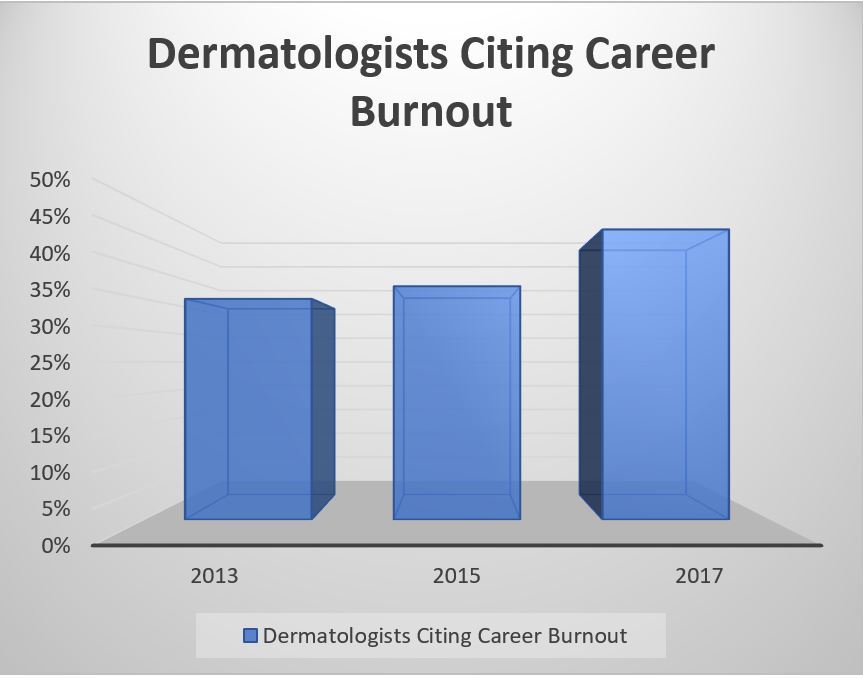Forty-six percent of dermatologists say they feel career burnout, according to the 2017 Medscape Physician Lifestyle Report. This sentiment seems to be worsening in dermatology, and medicine in general. Since 2013, the percentage of physicians who claim burnout has risen 25%.
During this same period, an increase in bureaucratic tasks has been named as the number one reason for burnout. Insurance, which was listed as a cause in 2017, had not previously made the list of contributing factors.
The problem with career burnout goes beyond physicians’ dissatisfaction with their work / life balance. Patients are impacted as well.
Limited Time & Limited Networks
It’s no secret that physicians are spending more hours on non-clinical tasks. In fact, a 2016 study conducted by the American Medical Association and Dartmouth-Hitchcock Health Care System found that only 27% of physicians’ time is spent face-to-face with patients. The rest of the workday is often spent handling tasks such as EHRs and practice management issues like HR, regulatory compliance, and payor negotiations.
The shortage of physicians’ clinical hours, coupled with narrowing networks, has driven up the amount of time patients must wait for an appointment. In fact, across the nation, patients are forced to wait an average of 35 days for a routine skin check appointment. In rural areas, wait times can be significantly longer.
Prior to affiliating with QualDerm, the physicians at a Hickory, NC, practice were frustrated with the increased demands of practice management. Patient wait times were hovering well above the national average, and efforts to recruit additional dermatologists were unsuccessful. What’s more, as a small independent practice, they were at risk of being pushed out of the commercial payors’ networks, which would further limit patient access to care. Since affiliating with QualDerm, both patient wait times and the practice management burdens have lessened. QualDerm recruited two new dermatologists to join the practice. The practice is also now better protected from narrowing payor networks since it is part of QualDerm’s larger, quality-driven network.
Retirement & Revenue
Burnout is pushing many physicians to consider early retirement. In fact, a 2016 survey by Merritt Hawkins put that number at 47%. What’s more, many physicians also fear that their stress levels could negatively affect the quality of patient care.
Unfortunately, giving up a career, and the accompanying salary, early can be a big financial disadvantage for physicians. In the wake of industry consolidation, dermatologists have more options to capitalize on the value of their practice while continuing to work. While alleviating the burden of practice management is extremely appealing, many physicians worry about losing their clinical autonomy.
QualDerm selectively affiliates with high-caliber dermatologists and is committed to retaining each of our physician partners’ clinical autonomy. This approach has allowed us to help practices expand patient access, improve efficiency, and position themselves for long-term growth and profitability, all while mitigating physician burnout.
Find out how affiliating with QualDerm can help alleviate the burden of practice management and prevent physician burnout.
Contact us to learn more about partnership opportunities or to discuss selling your practice.
